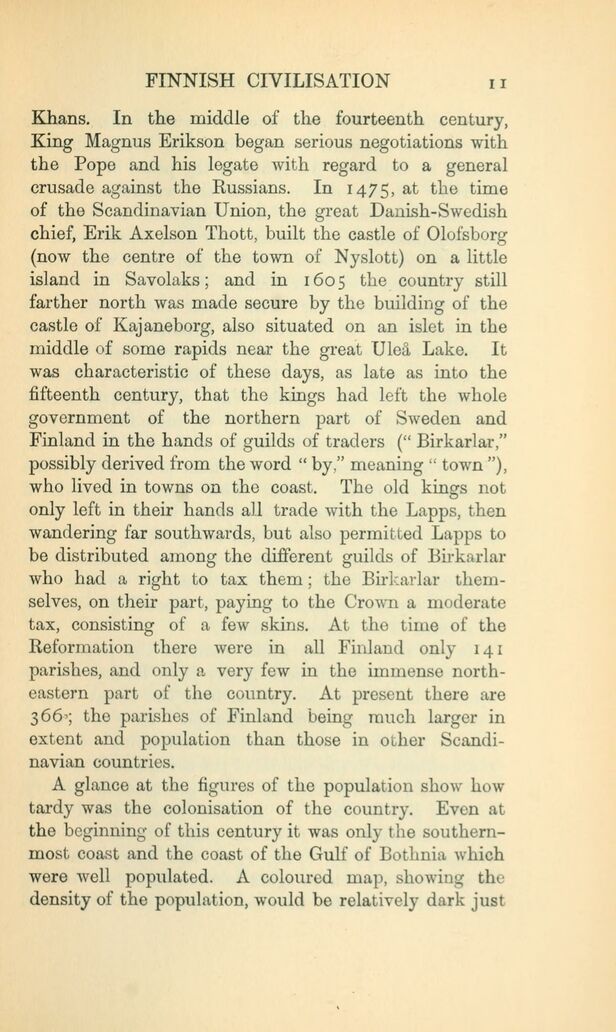
Full resolution (JPEG) - On this page / på denna sida - I. Peculiarities of Finnish Civilisation

<< prev. page << föreg. sida << >> nästa sida >> next page >>
Below is the raw OCR text
from the above scanned image.
Do you see an error? Proofread the page now!
Här nedan syns maskintolkade texten från faksimilbilden ovan.
Ser du något fel? Korrekturläs sidan nu!
This page has been proofread at least once.
(diff)
(history)
Denna sida har korrekturlästs minst en gång.
(skillnad)
(historik)
Khans. In the middle of the fourteenth century,
King Magnus Erikson began serious negotiations with
the Pope and his legate with regard to a general
crusade against the Russians. In 1475, at the time
of the Scandinavian Union, the great Danish-Swedish
chief, Erik Axelson Thott, built the castle of Olofsborg
(now the centre of the town of Nyslott) on a little
island in Savolaks; and in 1605 the country still
farther north was made secure by the building of the
castle of Kajaneborg, also situated on an islet in the
middle of some rapids near the great Uleå Lake. It
was characteristic of these days, as late as into the
fifteenth century, that the kings had left the whole
government of the northern part of Sweden and
Finland in the hands of guilds of traders (“Birkarlar,”
possibly derived from the word “by,” meaning “town”),
who lived in towns on the coast. The old kings not
only left in their hands all trade with the Lapps, then
wandering far southwards, but also permitted Lapps to
be distributed among the different guilds of Birkarlar
who had a right to tax them; the Birkarlar
themselves, on their part, paying to the Crown a moderate
tax, consisting of a few skins. At the time of the
Reformation there were in all Finland only 141
parishes, and only a very few in the immense
northeastern part of the country. At present there are
366; the parishes of Finland being much larger in
extent and population than those in other
Scandinavian countries.
A glance at the figures of the population show how
tardy was the colonisation of the country. Even at
the beginning of this century it was only the
southernmost coast and the coast of the Gulf of Bothnia which
were well populated. A coloured map, showing the
density of the population, would be relatively dark just
<< prev. page << föreg. sida << >> nästa sida >> next page >>